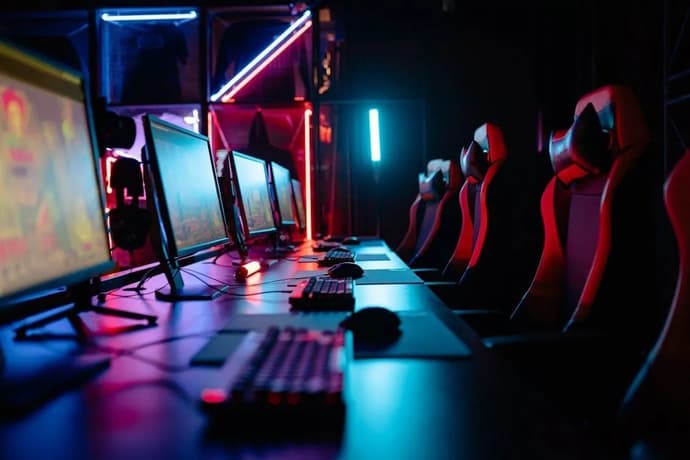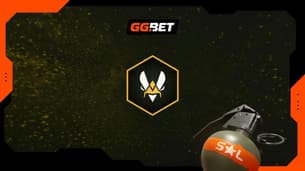
How to analyse the performance of eSports teams: a guide for fans

Even for football fans, analysing the performance of eSports teams can be a little more complex. For this reason, we're going to look at some of the details you need to observe to get the best possible report.
Analysing the performance of eSports teams is a task that goes beyond simply observing wins and losses. For those who really love the sport, understanding how and why a team succeeds or fails involves looking at a range of technical, tactical and psychological aspects.
In this article, we'll show you what's important to note and analyse in order to get a deeper, more informed report.
And a golden tip to share with your friends: save everything in PDF format. That way you don't lose the quality of the information and you keep the file safe.
And now for the tips. Write it all down and good luck with the analysis!
Here are some tips to help you analyse the performance of eSports teams
The world of eSports sees huge movements of people and money. According to figures, more than 11 million people are interested in the subject in France alone.
That's why fans of the sport need to keep an eye on the odds to get a good result in every match. The first thing to bear in mind is that analysing the performance of eSports teams goes far beyond simple rankings. To get the most accurate results possible, you need to understand how teams play, prepare and evolve over time.
By looking at game mechanics, statistics, player psychology and strategies, you'll be able to better understand what makes a team succeed or fail. For fans, this analysis can make the match-following experience even more attractive and exciting.
We've put together a few steps to help you meet this "challenge".
1 - Understand the main elements of the game
Every eSports game has its own characteristics and mechanisms that influence team performance. Key points include, for example, individual mechanics (the technical ability of each player), strategy and tactics (how the team organises itself and executes its moves), understanding of the game, strategic vision and tactical execution. In addition, the synergy between the players, i.e. the ability to play together and adapt during the match, must also be analysed.
Another important point to consider is the team's ability to adapt to new situations or strategies from its opponents.
Each game may require the fan to understand these aspects at different levels of complexity. For example, in games like League of Legends or Dota 2, map strategy and communication are essential. In Counter-Strike: Global Offensive, the emphasis may be on quick decision-making, precision and control of the game.
2 - Keep an eye on the statistics
Statistics are one of the most valuable resources for analysing a team's performance. The main parameters to take into account include individual performance, collective performance and card analysis.
In the case of card analysis, for example, many teams have cards in which they are stronger or weaker. Observing a team's performance on specific cards can indicate the strengths and weaknesses of its playing style.
When tracking the performance of eSports teams, it can be useful to organise your information in a digital report. With a PDF file, you can easily make adjustments and keep everything well structured. If, for whatever reason, you need to update your document after a detailed analysis, there are several platforms that allow you to edit PDFs quickly, without losing the quality of the information.
3 - Playing styles and strategies
Every team has its own style of play, which can vary depending on the team, the coach and the objective of the match. The possible categories are as follows:
- Aggressive play vs. passive play: more aggressive teams try to dominate the game quickly, while passive teams try to wait for their opponents' mistakes;
- Team composition: it is important to analyse whether a team knows how to put together effective compositions for the current objective;
- Objectives vs. eliminations: some teams focus more on controlling the map and objectives, while others give priority to eliminating their opponents;
- Adaptability: the team's flexibility to adjust its strategies during the game or from one map to another is crucial, especially in tournaments.
4 - Performance in tournaments and competitions
Performance in tournaments and leagues is fundamental. So keep an eye on the results of major tournaments (international or regional). Don't forget that a good team needs to be consistent in large-scale competitions, where the level of competition is very high.
Another point is to analyse the adaptation to new tournament formats, as changes in the tournament format, such as single elimination, groups, among other details, can influence the team's performance.
And finally, look at resilience in decisive moments. Teams that manage to cope with the pressure at crucial moments tend to be rated higher.
You should also consider the coach's experience, his approach to building a team and his ability to make the most of his players' potential. In this way, you can analyse the performance of eSports teams more comprehensively and more reliably.

Elen Stelmakh is a creative individual dedicated to advancing gaming culture through articles and visual design. As a full-time EGamersWorld author and designer for a gaming website, Elen not only creates content but also infuses it with energy and creativity.
 Vitality Champions of the StarLadder Budapest Major 2025: Grand Final OverviewThe StarLadder Budapest Major 2025 concluded with Team Vitality as champions and ZywOo taking MVP honors.
Vitality Champions of the StarLadder Budapest Major 2025: Grand Final OverviewThe StarLadder Budapest Major 2025 concluded with Team Vitality as champions and ZywOo taking MVP honors. Path of Exile 2: Disciple of Varashta Ascendancy OverviewPath of Exile 2 introduces Disciple of Varashta, a new Sorceress Ascendancy focused on djinn summoning, build flexibility, and deep character customization.
Path of Exile 2: Disciple of Varashta Ascendancy OverviewPath of Exile 2 introduces Disciple of Varashta, a new Sorceress Ascendancy focused on djinn summoning, build flexibility, and deep character customization. Should You Do an Expedition in ARC Raiders?ARC Raiders Expeditions let you reset your character for long-term rewards. Find out what to keep, lose, and how to prepare for the December 17–22, 2025 wipe.
Should You Do an Expedition in ARC Raiders?ARC Raiders Expeditions let you reset your character for long-term rewards. Find out what to keep, lose, and how to prepare for the December 17–22, 2025 wipe. ARC Raiders Expedition Project Guide: Exploitation of the Wipe SystemARC Raiders launches the Expedition Project — voluntary wipes that let players start fresh while keeping cosmetics and achievements. The first reset is scheduled for December 21, 2025.
ARC Raiders Expedition Project Guide: Exploitation of the Wipe SystemARC Raiders launches the Expedition Project — voluntary wipes that let players start fresh while keeping cosmetics and achievements. The first reset is scheduled for December 21, 2025.


